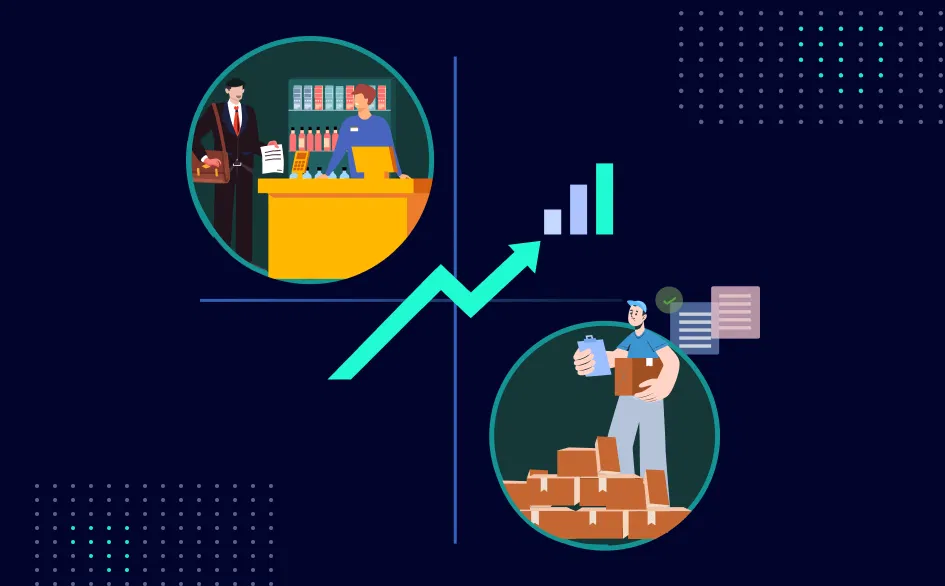Why Secondary Sales Tracking Matters
In fast-moving consumer goods (FMCG) industries, visibility into the secondary sales layer is often limited—but critical. While primary sales data (from manufacturers to distributors) is easy to capture, the real challenge lies in tracking what happens next: how much product flows from distributors to retailers, and ultimately, to end consumers. This is where a secondary sales tracking system becomes crucial for efficient distribution, accurate demand forecasting, and optimized sales performance.
What Is a Secondary Sales Tracking System?
A secondary sales tracking system enables manufacturers and brands to monitor, analyze, and optimize product sales after they leave the hands of primary distributors. It tracks inventory movement through the supply chain, offering visibility into:
- Stock levels at distributors and retailers
- Product sell-through rates
- Order patterns and frequency
- Regional and outlet-level sales performance
Such systems enable companies to overcome the limitations of conventional ERP setups and gain actionable insights from secondary data streams.
Primary vs. Secondary Sales: What’s the Difference?
| Metric | Primary Sales | Secondary Sales |
|---|---|---|
| Definition | Sales from manufacturer to distributor | Sales from distributor to retailer |
| Visibility | Typically easy to track via ERP | Requires integration and digital tools |
| Ownership | Manufacturer logs revenue | Distributor logs sales |
| Insight Value | Limited forecasting potential | Key to market-level demand understanding |
A secondary sales tracking system bridges the gap between these stages, bringing transparency and control to the often opaque territory of distributor and retail-level sales.
Why You Need Secondary Sales Tracking in FMCG
Here’s why a secondary sales tracking system isn’t optional for modern distribution operations:
1. Real-Time Demand Sensing
With access to outlet-level sales data, brands can react faster to changing consumer preferences. This minimizes overstocking or understocking, particularly in fast-moving categories.
2. Accurate Trade Promotions
Many trade promotions fail due to poor visibility into actual retail performance. Secondary sales insights let you assess campaign ROI, align incentives, and prevent fraud in channel claims.
3. Channel-Wise Sales Performance
Granular tracking helps brands identify underperforming outlets, non-moving SKUs, or regional discrepancies, empowering sales teams with precision data.
4. Forecasting and Replenishment
By automating sell-through data collection, companies can drive replenishment based on real retail movement—reducing losses and increasing sell-in efficiency.
5. Territory and Route Optimization
A good secondary sales tracking system integrates with salesforce automation, giving route-level data to optimize delivery schedules and coverage strategies.
How Secondary Sales Tracking Works
- Data Capture: From mobile apps, POS systems, distributor portals, or barcode scans.
- Data Aggregation: Synced to a cloud dashboard or DMS (Distribution Management System).
- Real-Time Analysis: AI/ML models identify patterns, outliers, and opportunities.
- Reporting & Alerts: Stakeholders get alerts on low inventory, non-moving stock, and deviations in expected sales behavior.
Features to Look for in a Secondary Sales Tracking System
Not all tracking tools are created equal. Here are must-have features:
- Multi-channel integration (ERP, DMS, SFA, POS)
- Geo-tagged outlet-level data
- Automated order, stock, and invoice tracking
- Offline and mobile compatibility
- Custom dashboards and exportable reports
- Data validation to reduce manual errors
- Incentive and scheme tracking capabilities
Real-World Impact: Case Scenario
Let’s say a beverage brand distributes through 120 distributors and reaches over 40,000 retail outlets. Before implementing secondary sales tracking, they faced:
- Frequent stockouts in Tier-2 cities
- Low ROI on trade promotions
- Distributors hoarding stock to meet targets
After deploying a cloud-based secondary sales system, they saw:
- 21% improvement in SKU availability at outlets
- 18% increase in promotional redemption accuracy
- 15% reduction in supply chain leakages
The bottom line? Transparency drives profitability.
Challenges in Implementing Secondary Sales Tracking
Even though the benefits are clear, adoption can face hurdles:
- Distributor Resistance: Legacy distributors may be hesitant to adopt new digital workflows.
- Data Reliability: Inconsistent reporting from retailers or poor internet access in remote regions.
- Integration Complexity: Aligning multiple data systems and sales hierarchies can be difficult without a flexible backend.
That’s why choosing a customizable and easy-to-deploy system is critical.
THEIA: Your All-in-One Sales Visibility Partner
At THEIA, we’ve built a modular secondary sales tracking system as part of our larger distribution management ecosystem. With smart integrations, AI-powered analytics, and retail-level insights, THEIA helps FMCG businesses uncover hidden opportunities in their secondary sales network.
✅ Route-level and outlet-level tracking
✅ Real-time dashboard for field reps and managers
✅ Integration-ready with ERP, SFA, DMS
✅ Automated alert system for low-stock and deviations
Want to see it in action? Explore THEIA’s Distribution Suite
Best Practices for Adopting a Secondary Sales Tracking System
- Educate Distributors and Retailers: Offer training sessions to ensure easy onboarding.
- Start with Key Territories: Pilot in high-potential zones before full rollout.
- Use Incentives: Reward compliance and reporting accuracy.
- Monitor Adoption Weekly: Set KPIs for data submission rates and accuracy.
- Invest in UI/UX: A simple mobile interface can make or break adoption.
Recommended Tools and Resources
Here are some reliable internal & external references to guide your strategy:
- Gartner’s Guide to Secondary Sales
- McKinsey on Digital Supply Chain Visibility
Final Thoughts: Stay Ahead of the Curve
As competition intensifies in the FMCG sector, companies that leverage granular, real-time data will lead the pack. A robust secondary sales tracking system empowers brands with the visibility they need to make confident decisions across territories, channels, and customer types.
THEIA helps you stay ahead—not just by tracking sales, but by unlocking performance where it matters most: at the last mile.












Leave a Reply